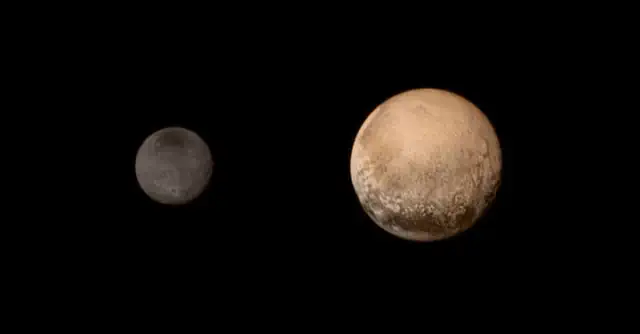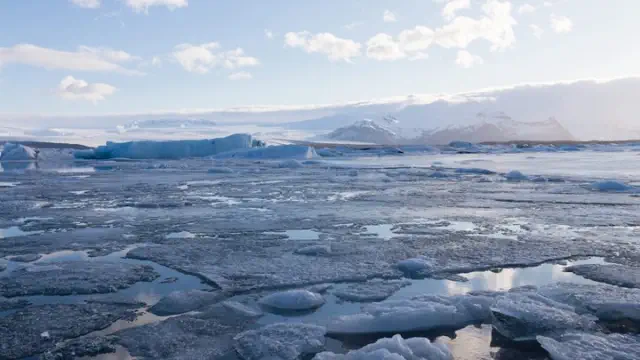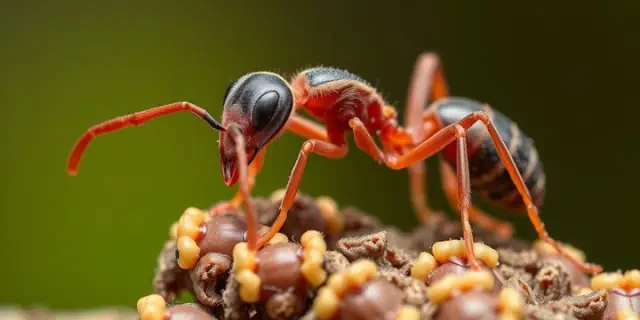
View pictures in App save up to 80% data.
Evolution resembles a magnificent show on the stage of our planet, where each species shines brightly at various points throughout history.
Envision a chronicle detailing the magnificent arrivals and departures of various species—not inscribed on paper or papyrus, but engraved within the bones and shells of ancient beings preserved through the ages.
Imagine a timeline that chronicles the evolution of life over the past 500 million years while reaching back nearly 2 billion years. A group of specialists at Virginia Tech has successfully brought this concept to fruition.
The scientists performed an in-depth examination of prehistoric life, pushing back the timeline of evolution to almost 2 billion years in the past.
Shuhai Xiao, a geobiologist at Virginia Tech, along with his team, examined these corridors of time. The research was particularly focused on marine eukaryotes, which are organisms that have cells with a nucleus.
Over time, these beings developed into multicellular life forms, such as animals, plants, and fungi, paving the way for an entirely new era of life on our planet.
“This represents the most thorough and current examination of this era thus far,” stated Xiao. “Furthermore, we employed a graphic correlation tool that enabled us to attain enhanced temporal resolution.”
A tale carved through the sands of time
The scientists have traced the origins of life forms to the Proterozoic Eon, a period that spans from 2.5 billion to 539 million years ago.
During this era, life forms such as sea sponges were typically smaller, more gelatinous, and less abundant. The majority of these organisms had not yet developed mineralized skeletons, resulting in a scarcity of fossils for us to discover in the present day.
Xiao and his team depict this journey through life as a dynamic dance of various species, with the intricate choreography revealing essential understanding of the simultaneous evolutionary trajectories of both life and our planet.
The Dull Billion and the glacial periods
An intriguing trend identified in the research was the presence of a relatively uneventful timeframe referred to as the “Boring Billion” (from 1.8 billion to 720 million years ago). During this era, it was believed that eukaryotic diversity remained fairly constant, indicating a more gradual rate of evolutionary change.
The researchers observed that "Eukaryotic species during the 'boring billion' might have experienced a slower rate of evolution and enjoyed a longer existence compared to those that emerged afterward."
Next, a dramatic turn unfolds in the story – the catastrophic Snowball Earth event, which enveloped the planet in ice on at least two occasions between 720 million and 635 million years ago.
This cold snap marked the beginning of a period of heightened evolutionary activity, transforming the previously slow and uneventful pace into a steady rise in the diversity of species.
Xiao attributes the ice ages as a significant influence that reshaped the course of evolution regarding diversity and dynamics. “Following glaciation, we observe a swift change in eukaryotic species. This is a key discovery.”
Fresh inquiries arise from timeless discoveries.
These trends raise numerous inquiries for upcoming studies. What factors contributed to the sluggish pace of evolution during the “Boring Billion”?
What elements contributed to the rapid acceleration of evolution following the snowball ice ages? Were shifts in environmental conditions, heightened atmospheric oxygen levels, or competition among species significant factors in this evolutionary surge?
These inquiries are essential for grasping the intricate relationship between life on our planet and the planet itself. With the findings from this new research and the comprehensive life chart, we are making strides toward deciphering the enigmas of ancient evolution.
This intriguing study not only enhances our comprehension of evolution but also paves the way for new avenues of scientific exploration.
By charting almost 2 billion years of the history of life, researchers can more effectively link changes in biodiversity to environmental and geological shifts, providing valuable understanding of how life evolves in response to changes on Earth.
Additionally, the comprehensive timeline offers a structure for investigating the beginnings of multicellular life, the development of intricate ecosystems, and the possibilities of extraterrestrial life.
By studying the evolution of life on Earth across various environments, scientists can enhance their models for detecting biosignatures on extraterrestrial planets.
As Xiao and his team progress in their research, this comprehensive evolutionary chart will become an essential tool for future investigations, linking Earth's prehistoric era with its vibrant present.
The full study was published in the journal Science.
—–
Like what you read? Subscribe to our newsletter for engaging articles, exclusive content, and the latest updates.
Check us out on EarthSnap, a free app brought to you by Eric Ralls and Earth.com.
—–









